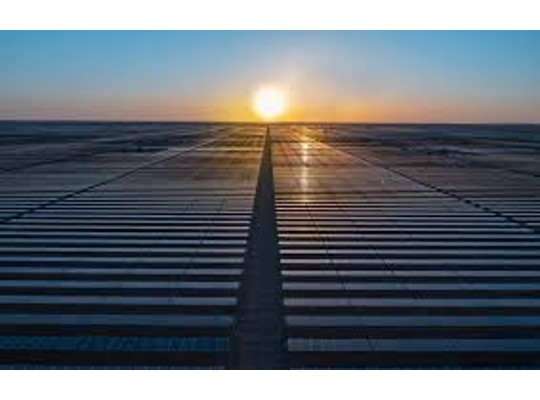The global motorcycle market, valued at $110 billion in 2023, is projected to grow at a compound annual growth rate (CAGR) of 4%, reaching $163 billion by 2033.
For as long as I can remember, motorcycles have meant more to me than just machines. They represent freedom, adventure, and pure excitement. Ongoing developments in the motorcycle market have sparked my excitement and ignited my passion for discussing the ever-evolving landscape of the industry. From groundbreaking innovations to shifting consumer trends, there’s no shortage of topics to explore and discuss
So, you know how electric bikes have been gaining traction, right? Well, I came across this new startup that’s taking eco-friendly riding to the next level. They’ve developed a prototype for a solar-powered motorcycle! Yep, you heard that right—solar-powered. It’s interesting to see how this innovation unfolds and whether it sparks a whole new wave of motorcycles in the industry.
Furthermore, changes in consumer preferences and lifestyles are reshaping the market in significant ways. The rise of adventure touring motorcycles, for example, reflects a growing desire among riders to explore remote destinations and embark on epic journeys. This trend has led to the development of versatile and capable adventure bikes that offer a perfect blend of on-road performance and off-road prowess.
As per FACTMR, the global motorcycle market is expected to witness a CAGR of 4% during the forecast period.
Let’s talk about key trends and opportunities in the market:
The motorcycle market is full of opportunities. Take the growing interest in electric motorcycles, for example. As more consumers prioritize sustainability and eco-friendly transportation options, there’s a massive opportunity for companies to invest in electric bike technology, infrastructure, and charging solutions.
One of the most prominent trends in the motorcycle market is the shift toward electric propulsion. Companies like Harley-Davidson with their LiveWire model and Zero Motorcycles have been leading the charge by introducing high-performance electric bikes. Countries like Norway and China are at the forefront of this trend, with strong government support and incentives driving electric bike sales.
The rise of adventure touring motorcycles has been another key trend, catering to riders seeking versatility and capability for both on-road and off-road adventures. Companies like BMW Motorrad with their GS series and Honda with the Africa Twin have capitalized on this trend by offering rugged, adventure-ready bikes packed with advanced features. Countries with vast landscapes and a strong outdoor culture, such as the USA, Canada, and Australia, are prominent markets for adventure touring motorcycles.
Digital technology is revolutionizing the riding experience, with features like connectivity, navigation, and rider aids becoming increasingly common. Companies like Ducati with their Ducati Multimedia System and Yamaha with their Yamaha MyRide app are integrating digital technology into their bikes to enhance safety, convenience, and entertainment for riders. Developed markets with a high demand for tech-savvy products, such as Japan, Europe, and the USA, are leading the adoption of digital integration in motorcycles.
Key companies in the market:
Honda Motor Co., Ltd.: Honda offers a diverse range of motorcycles catering to various segments, including sportbikes (such as the CBR series), cruisers (like the Rebel), adventure bikes (such as the Africa Twin), and scooters (like the PCX). Honda is known for its reliability, innovation, and advanced technology, with features like the Dual Clutch Transmission (DCT) available on select models. Honda has a global presence and is particularly prominent in markets like Japan, the USA, India, Indonesia, and Thailand.
Yamaha Motor Co., Ltd.: Yamaha offers a wide range of motorcycles and scooters, including sport bikes (like the YZF-R series), touring bikes (such as the FJR1300), adventure bikes (like the Ténéré series), and urban commuters (such as the MT series). Yamaha is renowned for its cutting-edge technology and high-performance engines, with features like the Yamaha Chip Controlled Throttle (YCC-T) enhancing rideability and responsiveness. Yamaha has a strong presence in markets worldwide, with significant footholds in Japan, Europe, the USA, India, and Southeast Asia.
Harley-Davidson, Inc.: Harley-Davidson specializes in heavyweight cruisers, touring bikes, and custom motorcycles, including iconic models like the Sportster, Softail, and Touring series. Harley-Davidson is synonymous with American craftsmanship, heritage, and a distinct V-twin engine sound. The company offers extensive customization options through its H-D1 Bike Builder program. While Harley-Davidson has a global presence, it is particularly dominant in markets like the USA, Canada, Europe (especially in countries like Germany and the UK), Australia, and select Asian markets.
BMW Motorrad: BMW Motorrad manufactures a wide range of motorcycles, including sport touring bikes (like the BMW R1250RT), adventure bikes (such as the BMW GS series), naked bikes (like the BMW R NineT), and luxury touring bikes (such as the BMW K1600 series). BMW Motorrad is known for its innovation and engineering excellence, with features like Dynamic ESA (Electronic Suspension Adjustment) and BMW Motorrad Connected app enhancing comfort and connectivity. BMW Motorrad has a strong presence in developed markets like Germany, the USA, the UK, Italy, and Japan, as well as emerging markets like China and India.
Kawasaki Heavy Industries Motorcycle & Engine: Kawasaki offers a diverse lineup of motorcycles, including sportbikes (like the Ninja series), cruisers (such as the Vulcan series), adventure bikes (like the Versys series), and off-road motorcycles (such as the KX series). Kawasaki is renowned for its high-performance engines and cutting-edge technology, with features like Kawasaki Traction Control (KTRC) and Kawasaki Quick Shifter (KQS) enhancing performance and rideability. Kawasaki enjoys strong sales in markets like Japan, the USA, Europe (particularly in countries like the UK and Germany), Australia, and Southeast Asia.













